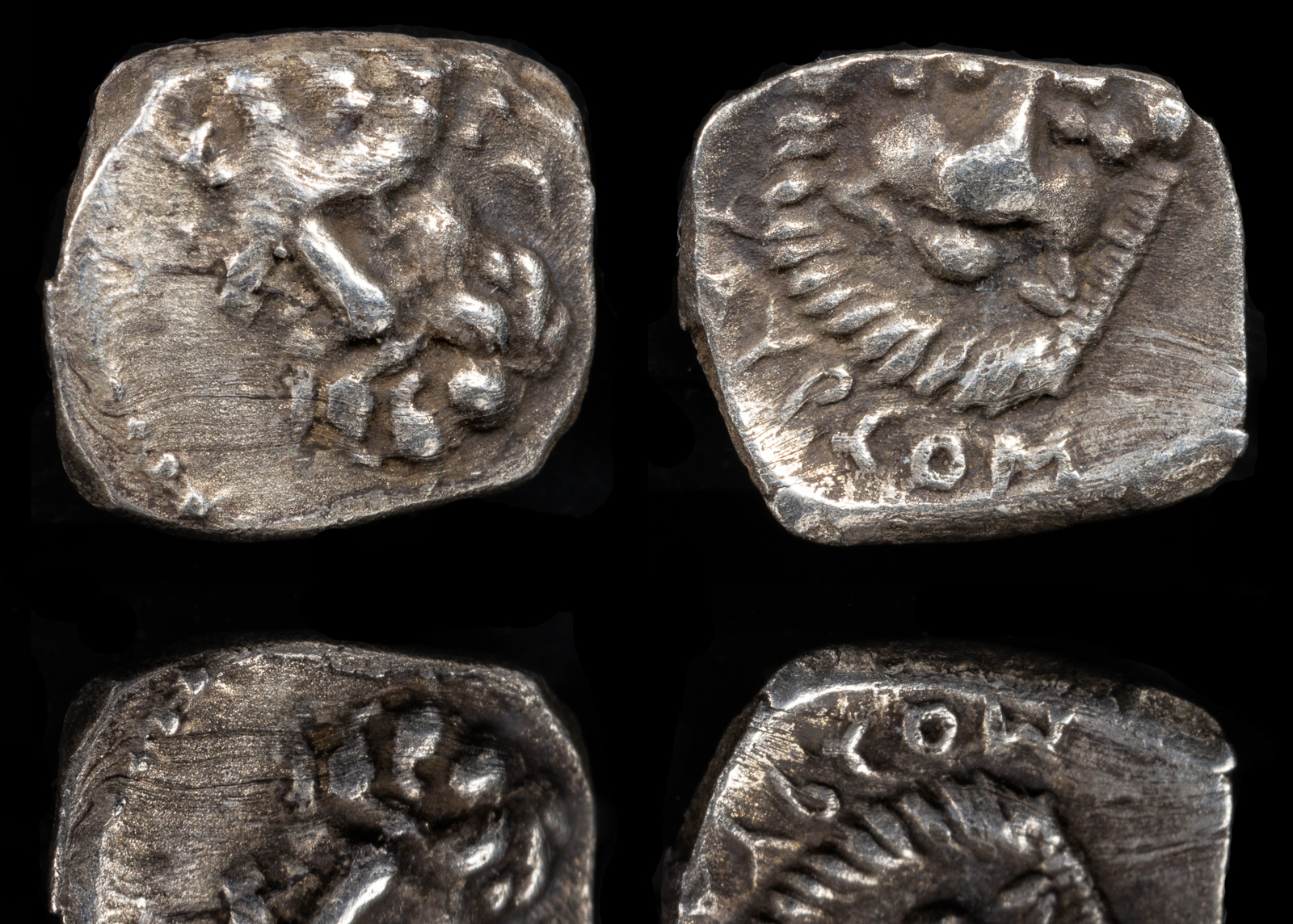
Isaura Palaia(?), Cilicia
Silver hemiobol c. 335-325 BCE
8.1mm 0.294g
obverse head of Herakles facing slightly left
reverse facing head of lion, YAYPCOM (or similar) below
Göktürk p. 150, 86 (Isaura Palaia), SNG Kayhan 1062, SNG Levante -; SNG BnF –
ex Leu Numismatik web auction 13 (15 Aug 2020)
ex Roma e-sale 52 (10 Jan 2019)
Among the craziest acts during the Era of the Diadochi, Isaura Palaia may have been the scene of the dumbest move.
After the death of Alexander, the city was besieged by Perdikkas, who wished to pacify the area along with Cappadocia. The citizens, knowing that they stood no chance in a long siege, chose a course that stunned even Perdikkas.
In the middle of the night, the men hunkered their families into their houses, boarded them up and then…lit the entire city on fire. Yes, they let their wives and children burn to death while they hid on a neighboring hill. They also left all the gold and jewels, with the idea they would burn too.
There were multiple flaws with this thinking, one primary one being that gold and silver will melt to…gold and silver. Perdikkas was dumbfounded at the move. Nevertheless, his troops moved in and found a significant amount of gold and silver in the ruins.
The men from Isaura Palaia survived. Their families – not so much. Perhaps this coin was in one of their pockets, or somehow else escaped the blaze. Note that the attribution to Isaura Palaia is tenuous. Göktürk, who is the world expert in this area, came up with the attribution, but the coin is so rare that it’s difficult to validate.
Balakros is kiled while dealing with an insurrection by the Isaurians and Larandians.
Perdikkas besieges Isaura Palaia. Its inhabitants set it on fire and burn their wives and children alive rather than submit them to slavery.
Isaura Palaia is destroyed for a final time by the Roman Servilius Isauricus. A new city was eventually built elsewhere and called Isaura Nea.
Kremna is taken by the robber Lydius from Isaura.